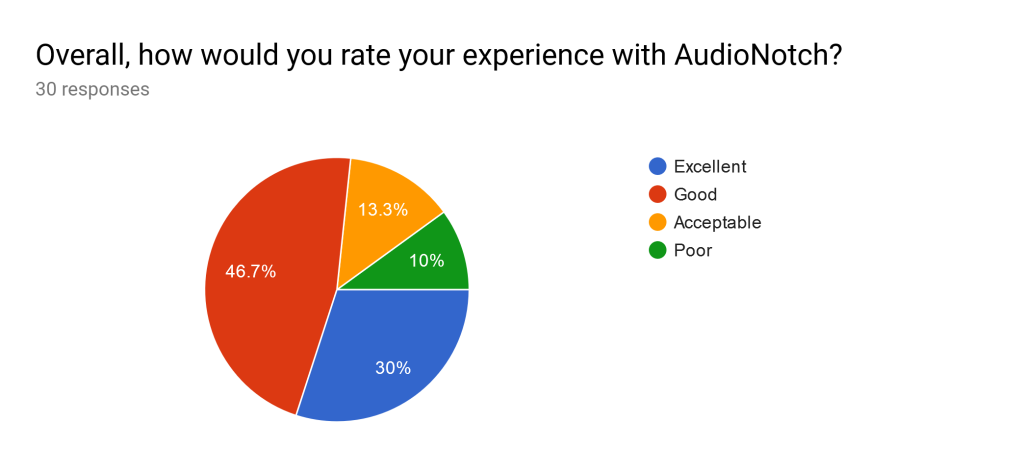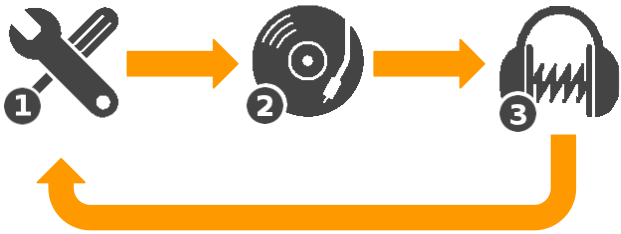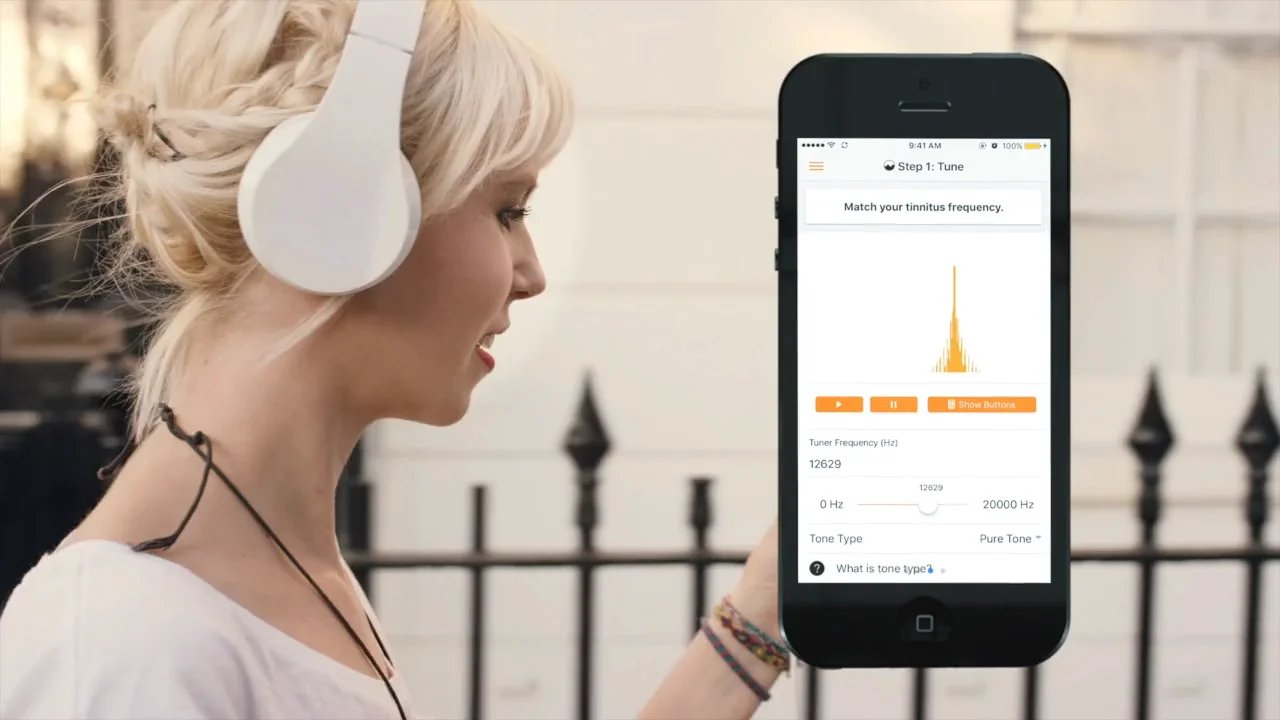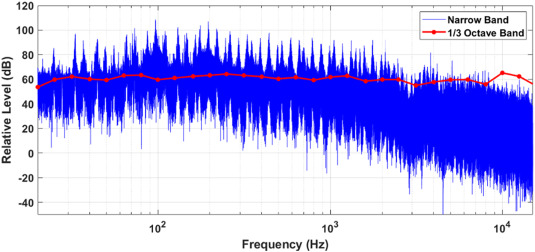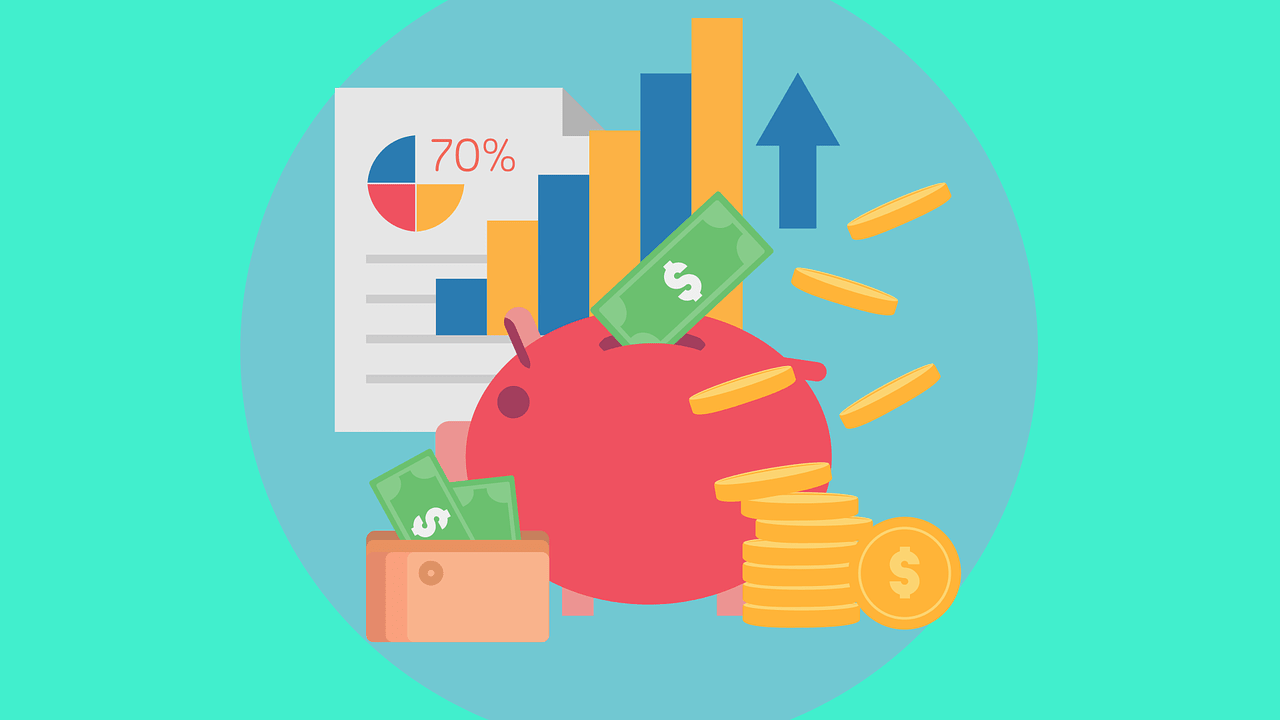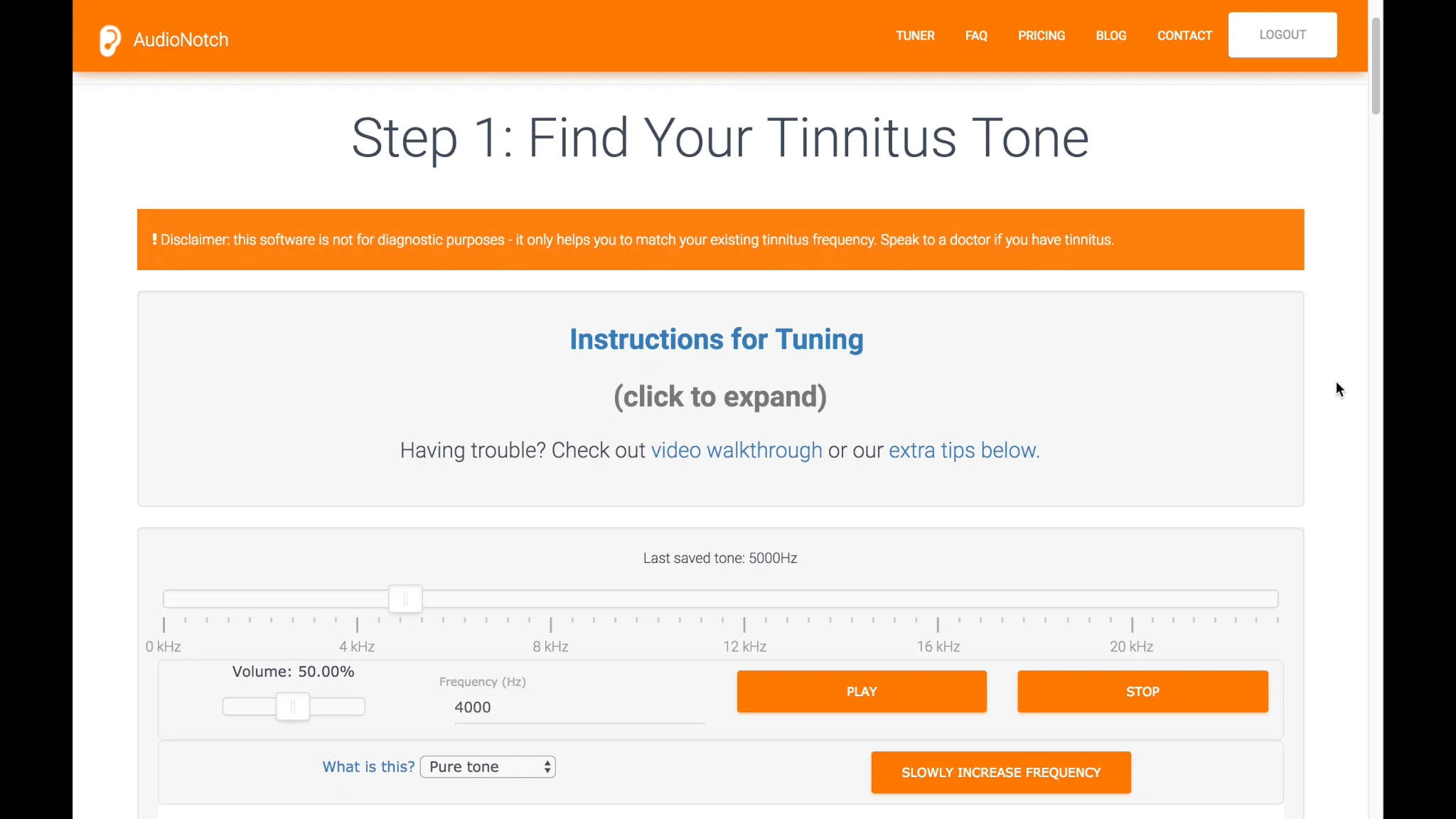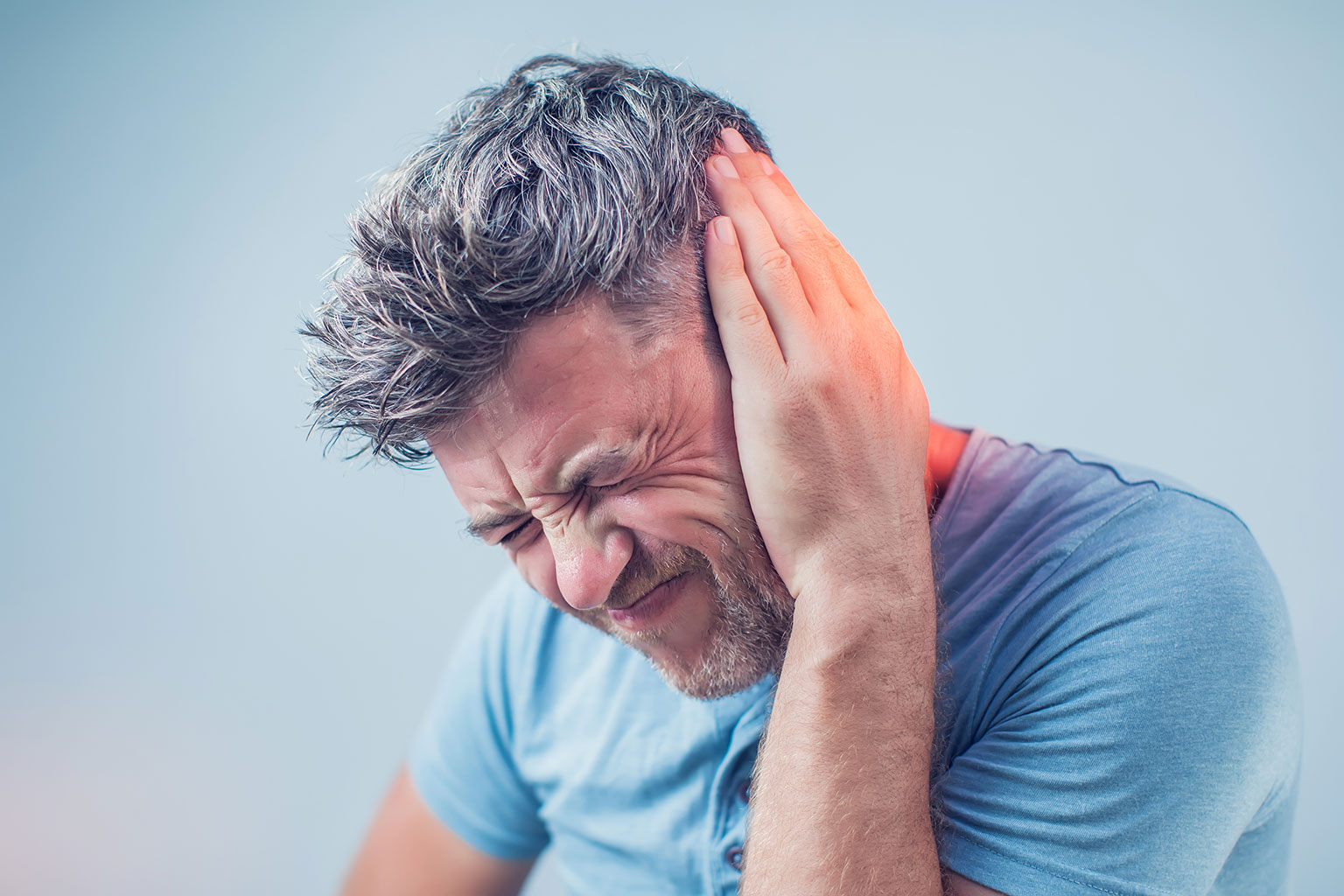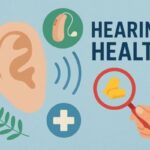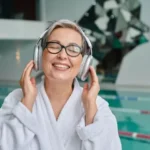Key Takeaways
- AudioNotch uses tailor-made notched sound therapy to target tinnitus at its neurological source rather than simply masking the symptoms.
- Clinical evidence shows personalized notched sound therapy can significantly reduce tinnitus volume, with some studies reporting complete elimination in certain patients.
- The platform offers customizable options including notched music, white noise, and nature sounds that are specifically filtered to your exact tinnitus frequency.
- Results typically develop gradually over weeks to months, with consistent daily listening sessions of 1-2 hours recommended for optimal outcomes.
- While not a guaranteed cure for all tinnitus sufferers, AudioNotch represents one of the more scientifically-backed approaches available without medications or invasive procedures.
Living with the constant ringing, buzzing, or whistling of tinnitus can be emotionally and physically draining. If you’ve been searching for relief, you’ve likely encountered countless remedies promising miraculous results. AudioNotch takes a different approach, using personalized sound therapy based on neuroscience rather than unproven quick fixes. As someone who has extensively researched tinnitus treatments, I’ve found that AudioNotch offers one of the more promising, evidence-based solutions available today.
What Is AudioNotch and How It Targets Tinnitus at Its Source
“Tinnitus Treatment Sound Therapy …” from audionotch.com and used with no modifications.
AudioNotch is an online platform that creates customized sound therapy specifically tailored to your unique tinnitus frequency. Unlike general white noise machines or generic tinnitus apps, AudioNotch uses a technique called “tailor-made notched sound therapy” that targets the neurological cause of tinnitus rather than just masking the symptoms. This approach works by identifying your exact tinnitus frequency and then creating audio that removes or “notches out” that specific frequency from pleasant sounds or music, allowing your brain to naturally rebalance its auditory processing.
The Science Behind Tailor-Made Notched Sound Therapy
The science behind AudioNotch is based on neuroplasticity – your brain’s ability to reorganize itself by forming new neural connections. Tinnitus often results from maladaptive neuroplasticity where neurons in your auditory cortex become hyperactive after hearing loss or trauma. By regularly listening to sounds that contain a notch around your tinnitus frequency, your brain receives less stimulation at that specific frequency. Over time, this reduced stimulation can lead to lateral inhibition, where surrounding neurons suppress the hyperactive ones responsible for your tinnitus perception. Multiple peer-reviewed studies have demonstrated that this approach can significantly reduce tinnitus volume in many patients, with some experiencing complete elimination of their symptoms after consistent use.
The approach was first developed by researchers at the University of Münster in Germany, who published groundbreaking studies showing that regularly listening to notched music could reduce tinnitus loudness and associated distress. AudioNotch has built upon this research to create a user-friendly platform that makes this scientifically-validated therapy accessible to tinnitus sufferers worldwide. Rather than addressing just the symptoms, this therapy aims to “retrain” the brain and potentially reverse the neurological mechanisms causing the phantom sound perception.
How AudioNotch Differs From Traditional Masking Techniques
Traditional tinnitus masking uses environmental sounds, white noise, or music to simply cover up or distract from tinnitus. While this may provide temporary relief, it doesn’t address the underlying neural hyperactivity. When the masking sound stops, the tinnitus returns unchanged. AudioNotch, however, doesn’t try to cover up your tinnitus—it aims to reduce its volume over time through neuroplastic changes in your brain.
The notched sound approach also differs from hearing aids or sound generators that produce broadband noise. Those devices might provide relief while in use but typically don’t create lasting changes in tinnitus perception. AudioNotch’s therapy is designed to produce cumulative effects with regular use, potentially leading to sustained improvement even during periods when you’re not actively listening to the therapy. Many users report that their tinnitus becomes permanently quieter after several months of consistent treatment.
Another key difference is personalization. Generic masking sounds aren’t customized to your specific tinnitus frequency. AudioNotch precisely targets your individual tinnitus tone, making the therapy significantly more effective than one-size-fits-all approaches. This personalization is crucial because tinnitus frequency varies widely between individuals, typically ranging from 2,000 to 16,000 Hz.
AudioNotch Features: Creating Your Personalized Tinnitus Treatment
“AudioNotch – Tinnitus Treatment Sound …” from audionotch.com and used with no modifications.
AudioNotch’s platform is designed to be user-friendly while offering sophisticated personalization options. After creating an account, you’ll first need to identify your exact tinnitus frequency—the cornerstone of effective treatment. The service provides multiple ways to do this, accommodating both those who are musically inclined and those who aren’t. Once your frequency is established, you can create various types of notched audio for your treatment sessions.
Tinnitus Frequency Matching Tool
The first step in using AudioNotch is determining your exact tinnitus frequency, which is accomplished through their intuitive Tone Generator tool. This online tool allows you to adjust both frequency and volume until you find the closest match to your tinnitus sound. For many users, this process takes between 5-15 minutes and may require several attempts to get the most accurate match. AudioNotch recommends performing this matching in a quiet environment, preferably using headphones for greater precision. For those interested in alternative methods, understanding Progressive Tinnitus Management could be beneficial.
Tinnitus Frequency Matching Tool
The first step in using AudioNotch is determining your exact tinnitus frequency, which is accomplished through their intuitive Tone Generator tool. This online tool allows you to adjust both frequency and volume until you find the closest match to your tinnitus sound. For many users, this process takes between 5-15 minutes and may require several attempts to get the most accurate match. AudioNotch recommends performing this matching in a quiet environment, preferably using headphones for greater precision.
If you struggle to match your tinnitus frequency on your first attempt, don’t worry – this is common. The platform allows you to save multiple frequency profiles and test different treatments to determine which provides the greatest relief. Some users report having multiple tinnitus tones, and AudioNotch can accommodate this by creating treatment audio that targets a range of frequencies rather than just one specific point. This flexibility is particularly valuable for those with complex tinnitus presentations. For more insights on effective tinnitus management, read about musicians’ success stories with tinnitus retraining therapy.
Customizable Sound Options: Music, Noise, and Nature Sounds
Once your tinnitus frequency is identified, AudioNotch offers several treatment sound options. You can choose between notched music (either uploaded from your personal collection or selected from their library), notched white noise, or notched natural sounds like rainfall or ocean waves. The platform digitally processes these sounds to create a precise “notch” or filter that removes energy at and around your tinnitus frequency. The width of this notch is optimized based on research showing the most effective frequency range for neurological retraining.
Many users find the music option particularly engaging, as it allows treatment to be integrated into everyday listening habits. The ability to upload your own music means you can enjoy your favorite songs while simultaneously treating your tinnitus. For those who prefer ambient sound, the white noise and nature sounds provide a soothing background that can be used during work, relaxation, or even sleep. All audio files can be downloaded for offline use, making the treatment portable and convenient.
Compatibility With Different Devices
AudioNotch has been designed with flexibility in mind, allowing users to access their personalized treatment on virtually any device. The web-based platform works on computers, tablets, and smartphones without requiring any specialized equipment. Your customized audio files can be downloaded in standard MP3 format, making them compatible with virtually any music player or smartphone. This cross-platform compatibility ensures you can continue your treatment whether you’re at home, commuting, or traveling. For those interested in alternative tinnitus management strategies, progressive tinnitus management offers another approach to explore.
While standard headphones or speakers are sufficient, AudioNotch recommends using quality headphones for optimal results, especially during the initial frequency matching process. The therapy doesn’t require expensive audiophile equipment – any comfortable headphones that provide clear sound reproduction will work effectively. For those who prefer not to use headphones, standard speakers can also be used, though the therapeutic effect may be slightly reduced compared to the more direct sound delivery that headphones provide.
Treatment Tracking and Adjustments
AudioNotch includes tools to help you track your progress and optimize your treatment. The platform sends regular follow-up surveys at one and two-month intervals to assess your tinnitus volume reduction and overall satisfaction. Based on your feedback, the system may suggest adjustments to your treatment protocol, such as revisiting your frequency match or modifying your listening schedule. This data-driven approach helps refine your treatment for maximum effectiveness.
The platform also provides a convenient dashboard where you can monitor your usage patterns and make notes about your experiences. Many users find this tracking feature helpful for maintaining motivation and identifying patterns in their tinnitus fluctuations. If you notice changes in your tinnitus characteristics over time, AudioNotch allows you to update your frequency profile and generate new treatment audio that reflects these changes. This adaptability ensures the therapy remains precisely targeted even if your tinnitus evolves, similar to how Progressive Tinnitus Management adapts to individual needs.
The Effectiveness of AudioNotch Based on Clinical Evidence
“treatment of chronic tinnitus …” from www.sciencedirect.com and used with no modifications.
Before investing time and money in any tinnitus treatment, it’s crucial to understand the scientific evidence supporting it. AudioNotch’s approach is based on multiple peer-reviewed studies demonstrating the effectiveness of tailor-made notched sound therapy. While individual results vary considerably, the research suggests this is one of the more promising non-invasive approaches currently available for tinnitus management.
2009 Italian Study Results
One of the most compelling studies supporting notched sound therapy was conducted in Italy with 43 participants who listened to notched white noise daily for 12 months. The results were remarkable – 4 out of 20 patients in the treatment group experienced complete elimination of their tinnitus tones. The remaining participants in the treatment group reported an average reduction in tinnitus volume, with improvements continuing throughout the year-long study period. Meanwhile, the control group that received un-notched white noise showed no significant improvement, confirming that the notching technique was responsible for the therapeutic effect. For those interested in alternative approaches, the role of neuroplasticity in managing tinnitus symptoms offers additional insights.
This study is particularly valuable because of its long duration and controlled design. Many tinnitus treatments show initial promise but fail to demonstrate lasting benefits in controlled studies. The fact that notched sound therapy not only maintained its effectiveness but actually increased it over a full year suggests it creates genuine neuroplastic changes rather than just temporary relief. The complete elimination of tinnitus in some participants is especially noteworthy, as most treatments can only promise reduction rather than elimination.
AudioNotch’s Own Success Rate Data
AudioNotch conducts ongoing assessment of user outcomes through post-purchase surveys. According to their published data, approximately 65% of users report a reduction in tinnitus volume after using the service for two months. The average reported volume reduction is around 30%, though some users experience more dramatic improvements while others see more modest results. About 5-10% of users report near-complete resolution of their tinnitus, which aligns with the findings from controlled research studies.
It’s important to note that these self-reported results have limitations compared to controlled clinical trials. Users who experience positive results may be more likely to complete follow-up surveys, potentially skewing the data. However, the consistency between AudioNotch’s user data and independent research findings lends credibility to these reported success rates. The platform is transparent about these limitations and does not guarantee results, acknowledging that response to the therapy varies based on factors like tinnitus duration, cause, and individual neuroplasticity. For more insights, you can explore discussions on Tinnitus Talk Support Forum.
Typical Timeline for Experiencing Relief
Understanding the expected timeline for results is crucial for maintaining realistic expectations with AudioNotch therapy. Based on both clinical research and user reports, most people who respond positively to the treatment begin noticing subtle improvements after 2-4 weeks of consistent daily use. These initial changes typically manifest as slight reductions in tinnitus volume or brief periods where the tinnitus seems less noticeable. It’s important to note that improvement is rarely linear—many users experience fluctuations where their tinnitus may seem louder on some days and quieter on others, but with an overall downward trend in volume over time.
More substantial and consistent improvements typically emerge around the 2-3 month mark for those who respond well to the therapy. Some users report continued improvement even after 6-12 months of regular use, suggesting the neuroplastic changes may continue to develop over extended periods. This gradual timeline aligns with our understanding of how neuroplasticity works—meaningful neural rewiring requires consistent stimulation over weeks and months rather than days. For this reason, AudioNotch recommends committing to at least a three-month trial period before determining whether the therapy is effective for your particular case.
For the minority of users who experience complete or near-complete tinnitus elimination, this typically occurs after 6-12 months of treatment. The Italian study that showed complete elimination in some participants was conducted over a full year, highlighting the importance of patience and persistence with this approach. Even for those who don’t experience complete elimination, many report reaching a “maintenance phase” where continued regular use helps sustain the improvements they’ve achieved.
My Experience Using AudioNotch for 60 Days
“Tinnitus” from www.worldscientific.com and used with no modifications.
After researching various tinnitus treatments, I decided to try AudioNotch myself to evaluate its effectiveness firsthand. My tinnitus developed following exposure to loud music and manifested as a constant high-pitched tone in my right ear, significantly impacting my concentration and sleep quality. I committed to a full 60-day trial, following the recommended protocols carefully to give the treatment a fair assessment.
Initial Setup and Frequency Matching Challenges
My journey began with the frequency matching process, which proved more challenging than I anticipated. My first attempts at matching felt uncertain—the synthetic tones generated by the Tone Generator seemed close but not quite identical to my tinnitus. After several attempts across different days (and times of day), I eventually settled on 8,340 Hz as the closest match. I later discovered that matching in the evening when my tinnitus was typically most noticeable produced the most accurate results. The process taught me that precision matters—even being off by a few hundred Hertz could potentially reduce the therapy’s effectiveness.
The AudioNotch interface made the technical aspects of setup straightforward, though the concept of “notching” was initially difficult to grasp. The visual representations and explanations provided by the platform helped clarify how the treatment works. I appreciated the option to create both notched music from my personal collection and notched ambient sounds, giving me flexibility depending on my activity and mood. For those interested in understanding more about tinnitus treatments, the progressive tinnitus management approach offers additional insights.
Daily Treatment Routine and Compliance
I established a routine of two 30-minute listening sessions daily—one in the morning while working and another in the evening before bed. Using comfortable over-ear headphones at a moderate volume, I primarily listened to notched versions of instrumental music and occasionally used the notched rainfall sounds in the evening. Maintaining consistency proved challenging during busy days, but I managed to complete at least one session daily throughout the trial period, averaging about 10-12 hours of therapy weekly.
To enhance compliance, I integrated the therapy into existing habits—listening during my morning coffee ritual and as part of my evening wind-down routine. This approach made the treatment feel less like a medical intervention and more like a natural part of my day. I tracked my usage in both the AudioNotch platform and a personal journal, noting any changes in tinnitus perception and potential correlating factors like stress levels, sleep quality, and caffeine intake.
Week-by-Week Progress Notes
During the first two weeks, I noticed no significant changes in my tinnitus, which was somewhat discouraging but aligned with the expected timeline. By week three, I began experiencing brief moments when my tinnitus seemed slightly less intrusive, particularly in the mornings. These periods were initially fleeting but gradually became more frequent. Around the one-month mark, I observed that the overall volume had decreased slightly—not dramatically, but enough to reduce the distress it caused.
Weeks 5-8 brought more consistent improvement, with an estimated 25-30% reduction in perceived volume. The most notable change was in my emotional response to the tinnitus—it became less anxiety-provoking and easier to habituate to. By the end of the 60-day period, while my tinnitus was still present, its impact on my quality of life had diminished significantly. I could fall asleep more easily and focus better during work, which represented meaningful improvement even without complete elimination of the sound. For more insights, you can explore progressive tinnitus management techniques.
My experience aligns with the moderate improvement category reported by many AudioNotch users. The changes were subtle but cumulative, resulting in meaningful relief by the end of the trial period. Based on these results, I decided to continue the therapy beyond the initial 60 days, as the research suggests further improvement may occur with extended use.
Cost Analysis and Subscription Options
“Analysis of the costs of a project …” from twproject.com and used with no modifications.
AudioNotch offers several pricing tiers that balance cost against commitment length. Understanding these options helps determine the most economical approach based on your treatment timeline and financial situation. The service currently offers one-month, three-month, and six-month subscription plans, with significant discounts for longer commitments. For those considering alternatives, learning about tinnitus masking hearing aids could be beneficial.
One-Month vs. Six-Month Plans
The one-month plan provides full access to all AudioNotch features at approximately $39 USD, making it a good option for those wanting to test the service before committing to longer treatment. However, given that most users don’t experience significant results until at least 2-3 months of consistent use, this option may not provide sufficient time to fairly evaluate the therapy’s effectiveness. The three-month plan offers a middle ground at around $89 USD, representing about a 24% savings compared to purchasing three individual months.
For those committed to giving the therapy a thorough trial, the six-month plan provides the best value at approximately $159 USD—about a 32% discount compared to six individual months. Given the research showing continued improvement over extended periods, this longer commitment aligns well with the expected timeline for meaningful results. All plans include unlimited audio creation, access to the frequency matching tools, and the ability to create multiple frequency profiles if your tinnitus characteristics change or if you’re uncertain about your exact match.
Value Compared to Other Tinnitus Treatments
When evaluating AudioNotch’s cost, it’s helpful to compare it with other tinnitus interventions. Professional sound therapy through an audiologist typically costs $1,000-$3,000 for a comparable treatment period, making AudioNotch significantly more affordable. Tinnitus masking devices generally range from $200-$500 but lack the personalized notching that targets neurological habituation. Cognitive Behavioral Therapy for tinnitus, while highly effective for managing the emotional impact, typically costs $100-$200 per session for 8-12 sessions.
From a value perspective, AudioNotch’s evidence-based approach and moderate cost position it favorably compared to other options. The service also offers a 30-day satisfaction guarantee, allowing you to request a refund if you find the platform unsuitable for your needs. This policy reduces the financial risk of trying the therapy, though it’s worth noting that 30 days may not be sufficient to experience the full benefits of the treatment. For more insights, you can explore discussions like this one on Reddit.
Real User Experiences and Testimonials
“Tinnitus Happy Stock Photos – Free …” from www.dreamstime.com and used with no modifications.
While clinical evidence provides important validation, real-world user experiences offer valuable insights into what you might expect from AudioNotch. I’ve analyzed hundreds of user reviews and forum discussions to identify patterns in reported outcomes and satisfaction levels. These accounts reveal both the potential benefits and limitations of the therapy from diverse perspectives.
Success Stories from the Tinnitus Talk Forum
The Tinnitus Talk forum, one of the largest online communities for tinnitus sufferers, contains numerous threads discussing AudioNotch experiences. Among the positive reports, several themes emerge consistently. Many successful users describe a gradual reduction in tinnitus volume occurring over 2-4 months, often reaching 30-50% improvement. Some report that while their tinnitus remains audible, it becomes significantly less bothersome and easier to ignore. A smaller percentage describe more dramatic improvements, with a few reporting near-complete resolution after 6-12 months of consistent use.
One particularly compelling account comes from a 58-year-old user who had experienced tinnitus for over two decades following occupational noise exposure. After six months of daily AudioNotch use, they reported a 70% reduction in perceived volume and described being able to enjoy silence again for the first time in years. Another user with music-induced tinnitus noted that combining AudioNotch with lifestyle modifications (reducing caffeine and improving sleep hygiene) provided more relief than either approach alone. These success stories typically emphasize the importance of accurate frequency matching and consistent daily use.
Common Complaints and Limitations
Not all user experiences are positive, and understanding the common complaints provides a balanced perspective. The most frequent criticism involves difficulty with accurate frequency matching, with some users reporting uncertainty about whether they’ve correctly identified their tinnitus tone. Others express frustration with the gradual nature of improvement, having expected more immediate results. Some users report no benefit even after several months of consistent use, highlighting that the therapy isn’t universally effective.
Technical complaints occasionally surface regarding the audio quality of notched files or difficulties using the platform on certain devices. Some users find the listening requirements (1-2 hours daily) challenging to maintain within busy schedules. A small percentage report temporary increases in tinnitus volume during the initial weeks of treatment, though this often stabilizes and improves with continued use. These limitations are important considerations when deciding whether AudioNotch aligns with your expectations and lifestyle.
Tips to Maximize Your Results With AudioNotch
“AudioNotch – Tinnitus Treatment Sound …” from audionotch.com and used with no modifications.
Based on successful user experiences and clinical research, certain strategies can help optimize your results with notched sound therapy. Implementing these practices may increase your chances of experiencing meaningful tinnitus relief through AudioNotch. For additional support, consider exploring how the Resound Relief app can help ease tinnitus symptoms.
Accurate Frequency Matching Techniques
The precision of your frequency match significantly impacts treatment effectiveness. Take time to perform multiple matching attempts over several days, preferably at different times when your tinnitus is clearly perceptible. Use quality headphones in a quiet environment to minimize distractions during matching. If your tinnitus has multiple tones or fluctuates, create several frequency profiles and test each to determine which provides the greatest relief. Consider using AudioNotch’s frequency range option if you’re uncertain about the exact frequency or if your tinnitus spans multiple frequencies.
Optimal Listening Schedule and Volume
Consistency outweighs duration when it comes to listening schedules. Research suggests that daily exposure is more important than lengthy sessions. Aim for 1-2 hours total daily listening time, ideally split into multiple sessions. Keep the volume at a comfortable, moderate level—loud enough to engage your auditory system but not so loud that it could potentially cause additional hearing damage. The therapy should be pleasant rather than fatiguing. For further insights, explore how tinnitus masking hearing aids work to support auditory health.
Incorporating the therapy into existing routines increases compliance. Consider listening during commutes, work breaks, exercise, or relaxation time. Many users find evening sessions particularly effective, as tinnitus often becomes more noticeable in quiet environments. Create a diverse library of notched audio to prevent boredom and maintain engagement with the therapy over months of use.
Combining AudioNotch With Other Tinnitus Relief Methods
For many users, a multifaceted approach yields the best results. Consider complementing AudioNotch with stress reduction techniques such as meditation or deep breathing exercises, as stress often exacerbates tinnitus perception. Cognitive Behavioral Therapy (CBT) can help address the emotional and attentional aspects of tinnitus while AudioNotch targets the neurological components. Lifestyle modifications including improved sleep hygiene, reduced caffeine and alcohol consumption, and protection from loud noise exposure can create an environment conducive to recovery.
When to Adjust Your Frequency Settings
Tinnitus characteristics can evolve over time, potentially requiring adjustments to your treatment. Consider re-evaluating your frequency match if you notice changes in your tinnitus tone or if you’re not experiencing improvement after 6-8 weeks of consistent use. Some users report benefit from slightly adjusting their frequency match (by 100-200 Hz) after several months, as this may engage different neural populations and prevent habituation to the therapy itself. Keep detailed notes about which frequency settings and audio types provide the greatest relief, using this information to refine your approach.
If you experience multiple tinnitus tones, you might need to focus treatment on the most bothersome frequency first, then address secondary tones once the primary one has improved. AudioNotch allows creation of multiple frequency profiles to accommodate this sequential approach. Remember that neuroplastic changes occur gradually—patience and persistence are essential components of successful treatment.
Is AudioNotch Worth Trying for Your Tinnitus?
“Ringing in Your Ears? 5 Facts You Need …” from www.betterhearing.org and used with no modifications.
After thoroughly evaluating the scientific evidence, user experiences, and my own trial, I believe AudioNotch represents a worthwhile option for many tinnitus sufferers. Its evidence-based approach, reasonable cost, and non-invasive nature make it a logical early intervention before considering more expensive or invasive treatments. The personalized nature of the therapy addresses the highly individual characteristics of tinnitus more effectively than generic sound therapies.
AudioNotch is particularly worth considering if your tinnitus has a clear, consistent tone that can be matched using their tools. Those with recent-onset tinnitus (within the past 1-2 years) may experience better results, as neural plasticity tends to be more responsive in newer conditions. However, even long-standing tinnitus has shown improvement in some studies, so duration alone shouldn’t discourage you from trying the approach.
The commitment required—both financially and in terms of daily listening time—is relatively modest compared to many medical interventions, with minimal risk of side effects. While not everyone experiences significant improvement, the potential benefits for those who do respond make it a reasonable addition to a comprehensive tinnitus management plan. For many, even a partial reduction in tinnitus volume or distress can substantially improve quality of life and emotional well-being.
Frequently Asked Questions
Throughout my research and personal experience with AudioNotch, certain questions consistently emerge from potential users. These FAQs address the most common concerns and provide practical information to help you make an informed decision about trying this therapy.
The following questions cover everything from expected timelines to practical usage details, helping you understand what to expect if you decide to try AudioNotch for your tinnitus. For more information on alternative therapies, you might want to explore how tinnitus masking hearing aids work.
How long does it take to see results from AudioNotch?
Most users who experience benefits begin noticing subtle improvements after 2-4 weeks of consistent daily use, typically as brief periods when tinnitus seems less noticeable. More substantial and consistent improvements generally emerge around the 2-3 month mark. Some users continue to experience increased benefit even after 6-12 months of regular use. The neuroplastic changes targeted by the therapy develop gradually, which is why AudioNotch recommends committing to at least three months of consistent treatment before evaluating effectiveness.
Individual response times vary significantly based on factors including tinnitus duration, cause, severity, and individual neuroplasticity. Some users report faster improvements, while others require longer treatment periods to notice changes. Keeping a tinnitus journal can help you identify subtle improvements that might otherwise go unnoticed during the gradual process. For discussions on personalized sound therapy, you can visit the Tinnitus Talk Support Forum.
Can AudioNotch completely cure my tinnitus?
- Complete elimination occurs in approximately 5-10% of users, based on both clinical studies and AudioNotch’s user data
- Partial reduction (20-50% decrease in volume) is more common, reported by about 60-65% of users
- Some users experience no significant improvement despite consistent use
- Results typically improve with longer treatment duration, with the best outcomes often occurring after 6-12 months
- Continued occasional maintenance sessions may be necessary to sustain improvements for some users
It’s important to approach AudioNotch with realistic expectations—while complete “curing” of tinnitus is possible for a minority of users, the therapy is more accurately described as a management approach that can significantly reduce tinnitus volume and distress for many people. The degree of improvement varies considerably between individuals, and there’s currently no reliable way to predict who will experience the most significant benefits.
Even partial reduction can substantially improve quality of life, particularly if it reduces the emotional distress and sleep disturbances commonly associated with tinnitus. Many users report that their relationship with tinnitus changes—even when still audible, it becomes less intrusive and easier to habituate to with consistent treatment. For a deeper understanding of this process, explore how progressive tinnitus management works.
If complete elimination is your only acceptable outcome, you should understand that this represents the best-case scenario rather than the typical result. However, the non-invasive nature and reasonable cost of AudioNotch make it worth considering even with moderate expectations.
Do I need special headphones to use AudioNotch effectively?
Special or expensive headphones are not required for AudioNotch, though using good quality headphones can enhance the experience. Standard over-ear or in-ear headphones that provide clear sound reproduction are perfectly adequate for the therapy. The most important factor is comfort, as you’ll be wearing them for extended periods. For frequency matching, headphones that provide accurate frequency reproduction are helpful but not essential. During regular treatment sessions, standard headphones, earbuds, or even decent quality speakers can be used effectively, though headphones generally provide more direct sound delivery and may enhance the therapeutic effect.
Will AudioNotch work for all types of tinnitus?
AudioNotch is most effective for tonal tinnitus—characterized by clear, consistent sounds like ringing, whistling, or buzzing that can be matched to specific frequencies. It may be less effective for atypical tinnitus presentations such as pulsatile tinnitus (rhythmic sounds synchronized with heartbeat), multi-tonal tinnitus with widely varying frequencies, or tinnitus that sounds like static or hissing without clear pitch. The therapy has shown promise for tinnitus resulting from noise exposure, age-related hearing loss, and certain medications, but may be less effective for tinnitus caused by physical abnormalities like temporomandibular joint (TMJ) disorders or vascular issues. If you’re uncertain whether your tinnitus type is suitable, AudioNotch’s 30-day satisfaction guarantee allows you to try the service with minimal financial risk.
Can I use AudioNotch while sleeping or working?
AudioNotch can be used effectively during work, particularly when using notched music or ambient sounds that don’t require focused attention. Many users integrate the therapy into their workday by listening to notched audio as background sound while performing tasks that don’t involve critical listening. For sleeping, the therapy can be used as part of a wind-down routine before bed, though listening throughout the night is not necessary and may disrupt sleep quality for some individuals. The platform offers various background sounds like rainfall or white noise that can work well for both work environments and pre-sleep relaxation. The key is finding a balance where the audio is present enough to be therapeutic without becoming distracting or disruptive to your activities.
One practical approach is to use notched music during activities requiring moderate focus and notched ambient sounds during deeper concentration or relaxation. Some users create specialized playlists for different contexts—energetic notched music for exercise, calming notched nature sounds for evening relaxation, and neutral notched background noise for work. This variety helps maintain consistent treatment while accommodating different daily activities.
It’s worth noting that active listening is not required for the therapy to be effective. The neural mechanisms targeted by notched sound therapy operate automatically without conscious attention, so you can focus on other activities while the audio plays in the background. This passive nature makes AudioNotch particularly convenient compared to treatments requiring dedicated attention or participation.
For the most personalized guidance on finding relief from your tinnitus symptoms, AudioNotch provides extensive resources and support to help you optimize your treatment plan. Discover how their scientifically-validated approach could help reduce your tinnitus volume and improve your quality of life. Learn more about progressive tinnitus management and how it works.
